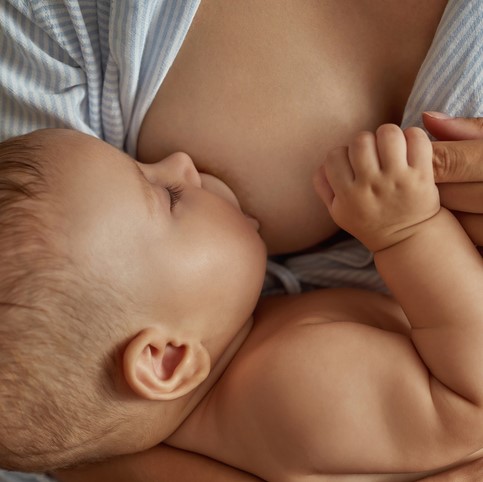How To Prepare for Breastfeeding During Pregnancy

MĀMĀ Stacey Takitimu
PĒPI Kenai Beazley
PHOTOGRAPHY Catherine Smith @catherinesmithphotography
One of the best way to prepare to breastfeeding during pregnancy is to have a good understanding of how breastfeeding works and what to expect in the first days. Let us explain.
The World Health Organization (WHO) and the Ministry of Health (MOH) recommend that babies are exclusively breastfed for the first six months of life and continue to be breastfed alongside complementary foods for up to two years of age and beyond. Breastfeeding helps your baby achieve optimal growth, development, and health in their infancy.
Your baby should be breastfed on demand, as often as they want or need to during the day or night.
Breastfeeding is the best source of nourishment for your baby. It’s the perfect food.
THE SCIENCE OF THE BREASTFEEDING JOURNEY
Your breastfeeding journey begins when you go through puberty and your breast tissue first develops. Then during pregnancy, your breasts start changing right away. Hormones and increased blood volume accelerate the development even more, with an increase in the number of milk ducts in your breasts and the milk-making cells and tissue.
Halfway through your pregnancy, your body already starts producing your baby’s first milk, colostrum. Some people see drops or leak milk while hapū whereas others don’t at all. If you don’t leak it doesn’t mean you won’t have enough milk for your pēpi; all bodies are just different.
Straight after birth, a hormone shift tells your body to start making more breast milk.
Your first breastfeed
After birth, your baby should immediately be placed skin-to-skin to encourage the first breastfeed and keep them warm. Most babies instinctively move towards the breast using their sense of smell to navigate before latching all on their own – this is often called the breast crawl and is a natural process.
If possible, breastfeeding should be initiated within the first hour while having skin-to-skin contact. When your baby latches on for the first time, your body will release a hormone called oxytocin which is known as the love hormone, helping you and your baby to bond. If you need assistance with your baby’s latch, your midwife will help you.
Breastfeeding straight after birth helps the uterus to contract down and encourages the delivery of the placenta. Baby should be kept on your chest skin-to-skin for at least an hour, even if they have finished feeding.
Breastfeeding saves you money – your baby will have fewer doctor’s visits and you don’t have to buy food for them until they start solids at six months.
Beyond initiating breastfeeding
During the first few days of breastfeeding, your baby will be having the colostrum that your body started producing during pregnancy. Colostrum is often referred to as ‘liquid gold’, both for its thick, yellow appearance and its nutrient-dense composition. It is the perfect first food for your pēpi. Colostrum is full of white blood cells that are vital for protecting your baby from infection. It’s rich in antibodies that are essential for good gut health and it has lots of vitamins, minerals, and protein that your baby needs for sustenance.
Once your baby is two days old, they will begin a process called cluster feeding which is where they feed even more frequently to bring in the next type of breast milk. Cluster feeding can be exhausting and seemingly constant but is a normal and important part of breastfeeding to build a good supply.
You should begin to notice the amount of breast milk increases day by day as your baby drinks and cluster feeds more. People talk about your milk ‘coming in’ which is in reference to this next stage of production where your breasts may feel engorged as they’re firmer and full of milk. This is when the colostrum changes into transitional milk which is higher in fat and creamier in colour. When your baby feeds at the breast, they stimulate the let-down reflex where the milk is ‘let down’ and flows through your nipples for your baby to drink. Some breastfeeding people can feel their let-down and liken it to a pins and needles type of feeling, while others do not notice it at all. After the let-down, you will hear your baby swallowing the flowing milk.
Within 2-3 weeks, your breast milk matures into a milk that is watery and thirst-quenching at the beginning of each feed and thicker and creamier towards the end. Breastfeeding is based on supply and demand so by feeding your pēpi when they want to, you will have a good supply of milk for them to develop and grow.



